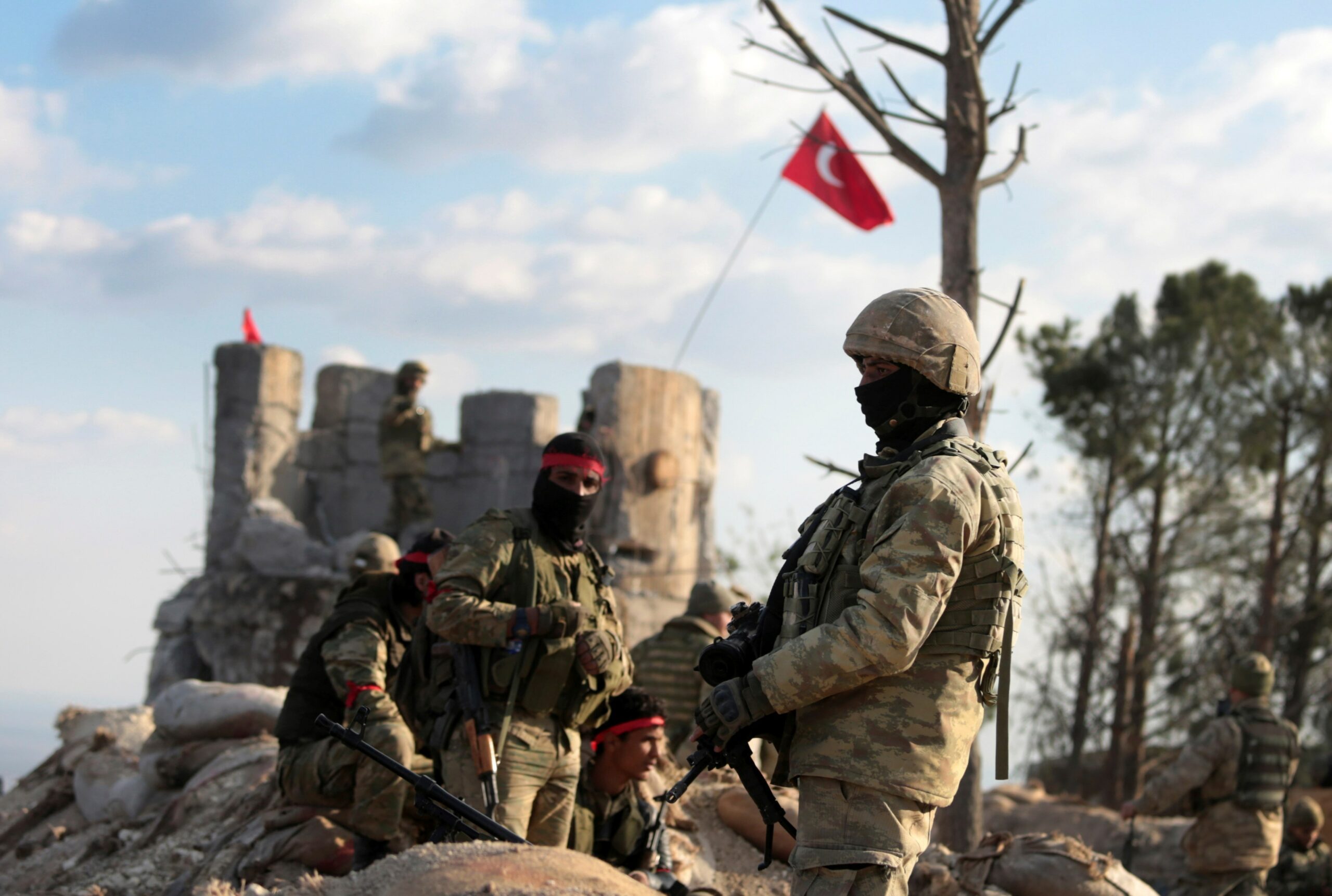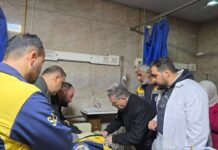
The Turkish military, alongside the Turkish-backed Syrian National Army (SNA), has increased its offensive against the US-backed, PKK-aligned Syrian Democratic Forces (SDF) in northern Syria. This escalation comes as the SDF finds itself battling on two fronts: facing Turkish-aligned revolutionary forces in the north and contending with Iranian-backed Tribal Forces and the Assad regime in the east.
The Turkish Ministry of Defense announced its intention to carry out preemptive operations against what it terms “terrorist organizations” in Syria, explicitly targeting the People’s Protection Units (YPG), the dominant force within the SDF. Ankara views the YPG as an extension of the Kurdistan Workers’ Party (PKK), which is internationally designated as a terrorist organization. In a statement issued on Saturday, the ministry claimed to have “neutralized” 12 members of the YPG in operations in northern Syria, specifically within the areas of the Euphrates Shield and Olive Branch in Aleppo province.
The ministry’s statement demonstrates Turkey’s determination to prevent the establishment of what it calls a “terrorist corridor” along its southern border. The latest operations included air and artillery strikes on SDF positions in Sheikh Issa and Tal Rifaat, following an attempted infiltration by SDF fighters on the Kaljibrin axis. Turkish officials have vowed to continue proactive and sustained military efforts to “eliminate terrorism at its source.”
As the Turkish military intensifies its campaign in the north, the SDF is simultaneously engaged in fierce battles in the east against the Assad regime and Iranian-backed Tribal Forces in Deir Ezzor. The dual conflicts have stretched the SDF’s resources thin, as it struggles to maintain its grip on territories under attack from multiple directions.
In the northern region, the SDF has responded to Turkish aggression by targeting Turkish-backed SNA positions. The SDF’s Manbij Military Council reported that Turkish forces bombarded villages under its control, causing fires in agricultural lands. The council also claimed responsibility for downing two Turkish drones in the Manbij countryside.
In recent weeks, the SDF has carried out several infiltration operations against SNA positions, aiming to disrupt their defenses. The SDF has leveraged its night operations and local knowledge to inflict casualties on Turkish-aligned SNA forces.
Turkey’s recent military actions are part of a strategy to curb the influence of the SDF, which it perceives as a direct threat to its national security. Since the beginning of 2024, Turkish forces have reportedly targeted over 1,500 PKK-affiliated fighters in northern Syria and Iraq. The Turkish Ministry of Defense frequently uses the term “neutralization” to denote the killing, wounding, or capture of these individuals.
In a significant development, Turkey has also expressed approval of Russia’s decision to establish a new military base in Ain al-Arab (Kobani), a region under SDF control near the Turkish border. Ankara views this as a step towards weakening the SDF’s presence in the area, in line with agreements between Turkey, the US, and Russia to reduce the PKK’s influence in northern Syria.
However, the ongoing clashes have had a devastating impact on civilians in northern Syria, with artillery shelling and airstrikes causing widespread damage to homes and infrastructure. Both sides have suffered casualties, and the region is witnessing increasing displacement as families flee the violence.
The SDF’s strategy of night-time infiltration operations, while effective in certain instances, has also exposed weaknesses within the Turkish-backed SNA’s defenses. Reports indicate that the SNA suffers from a lack of essential equipment, such as night vision devices, which has made them vulnerable to SDF’s surprise attacks.
Field commanders within the SNA have called for better coordination and the provision of modern surveillance technology to counter the SDF’s tactics. Military experts suggest that improving defensive measures, such as fortifying positions and deploying mines, could help reduce casualties and prevent further SDF advances.
The SDF continues to battle on multiple fronts and the situation in northern Syria remains precarious. The intensifying conflict between Turkey and the SDF, set against the backdrop of regional tensions involving Iran, Russia, and the Assad regime, threatens to further destabilize an already volatile area.








